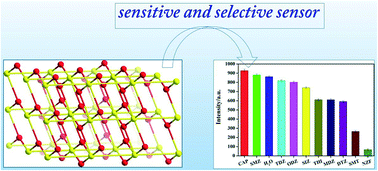The abuse of antibiotics has caused global problems including critical environmental ecology impacts. Herein, four new metal–organic frameworks (MOFs) – {[Cd(HL)(bic)(H2O)]·2H2O}(1), {[Cd3(L)2(bbi)2(H2O)2]·2H2O}(2), [Cd3(L)2(bib)2(H2O)2] (3) and [Cd3(L)2(idy)2] (4), where bic = 3,6-bis(imidazol-1-yl)-9H-carbazole, bbi = 1,1′-(1,4-butanediyl)bis(imidazole), bib =1,4-bis(1-imidazoly)benzene and idy = 2-imidazol-1-ylpyridine – have been synthesized and fully characterized. 1 is a 1D chain with a large loop, stacked parallel to each other in 2D supramolecular layers by hydrogen-bonded and packing interactions. 2 and 3 are isostructural and show a 3D (3,8)-connected tfz-type network with (43)2(46·618·84) topology. 4 has a 2D grid framework. The oxygen atom of the ether-bridging group acts as a Lewis base site, which improves the connection strength and allows the detection of 11 types of antibiotics through the fluorescence quenching effect. Among them, 2 exhibits sensitive and selective detection for nitrofural (NZF) (KSV = 8.26 × 103 M−1 and LOD = 1.83 ppm). Moreover, the highly selective probe behavior towards NZF ions could be maintained even if there are other interfering antibiotics.

